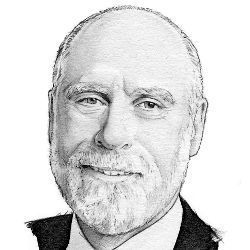
For the two-thirds of the world’s population actively online and for legislators worried about harmful, disruptive, misleading, and toxic content, it seems obvious to ask, “How have we gotten into this condition?” A glib but perhaps accurate answer is “scale.” Decades ago, before the Internet and World Wide Web (WWW) were so deeply embedded in our society, large-scale sources of information (including misinformation) were fewer in number. There were a limited number of book and news publishers, a limited number of television and radio stations. Radio and television media companies were licensed. There were restrictions on how many such publishers could be owned by one entity. Broadcasters and cable casters were answerable to regulatory bodies, such as the U.S. Federal Communications Commission.
While consumers could not subscribe to all the sources, libraries acted as aggregators. If you could not subscribe or buy the book, you might find it in the library. At least in democratic societies, libraries preserved the freedom to read, but books could be read by only one person at a time. Online media provides a low-cost way for everyone to have concurrent access to content. Scale!
Apart from licensing, running a broadcasting or publishing business was costly. People got their news from a relatively small number of sources, whether local, national, international. Part of the result was most people could access the same facts even if they disagreed about the implications. Fast-forward to today’s information-richa environment. Virtually anyone can post a Web page, set up a Twitter account, create a Facebook account, or upload a YouTube video. The barriers to information generation and sharing have plummeted; information consumers can choose among billions of potential sources. They still may turn to the most popular ones, and popularity is easy to discover and to track.
This is information at scale. The platforms through which information is delivered are confronted with enormous scale on both source and sink sides of the equations, unlike traditional media, in which there were fewer sources and many more consumers. Newspaper and magazine publishers could curate their content, as could the limited number of television and radio broadcasters. As cable television advanced, there were many more channels available to specialize and reach smaller audiences. The Internet and WWW exploded the information source space by orders of magnitude. For example, platforms such as YouTube receive hundreds of hours of video per minute. Tweets and Facebook updates must number in the hundreds of millions if not billions per day. Traditional media runs out of time (radio and television) or space (print media), but the Internet and WWW run out of neither.
I hope that a thirst for verifiable or trustable facts will become a fashionable norm and part of the solution.
Adding to the challenge, source material arrives in hundreds of languages. Scale! Special vocabularies confound analysis (think “dog whistles”). Manual intervention to curate content defies feasibility, and stories of trauma experienced by filtering teams are sad and shocking. There are some who hope that artificial intelligence (AI) and machine learning (ML) might be part of the solution, but sometimes they are the source of the problem.
Is there an answer to the dilemma of scale? Some AI methods may help, and one might even imagine that consumers could choose to invoke a variety of ML filters to curate the content they receive, in addition to choosing subscription sources. Adding to the challenge is the deep fake phenomenon. Transparency and provenance requirements might mitigate some of the worst effects of disinformation but may be imperfect at best. Critical thinking about content is another potential mitigation tool but that requires work by consumers. There does not seem to be an easy answer to coping with scale. State-driven censorship, desired in some regimes, is not a democratic answer. I hope that a thirst for verifiable or trustable facts will become a fashionable norm and part of the solution.



Join the Discussion (0)
Become a Member or Sign In to Post a Comment